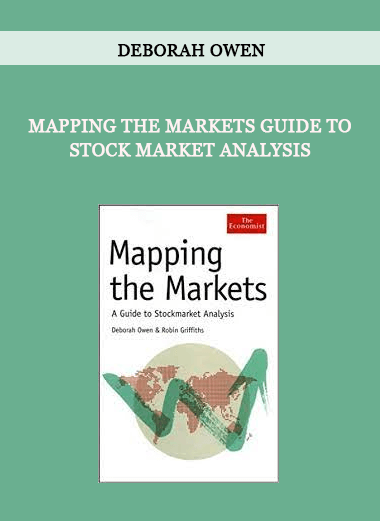Courses Infomation
Mapping the Markets Guide to Stock Market Analysis by Deborah Owen

Mapping the Markets Guide to Stock Market Analysis by Deborah Owen
The global financial markets turn over billions of dollars daily. An array of different instruments is available to trade in these markets, ranging from simple stocks and shares to exotic creatures such as butterfly spreads. Participation at any level involves taking a view as to which way the market in question will move. There are essentially only two methods for analysing the future direction of the markets in equities, currencies, interest rates or commodities: one involves fundamental analysis, the other technical analysis. The two camps of investment analysts are separated by a wide gulf of distrust and suspicion. This book seeks to bridge the gap between the two disciplines and show how you can benefit from both, highlighting:
- The tools you can use for mapping the markets—to understand what causes shifts in the trend and underlying forces that affect the economy and therefore the financial markets
• The long-term cyclical drivers—how economic change is triggered by technological change, and the technological changes that will drive the markets in the future
• Downward phases of the cycle—and the factors that cause them
• The markets and sectors that will prosper in the future.
As the world of investment gets ever more complicated and faster, Mapping the Markets will provide an invaluable route to improving your chances of investment success and avoiding investment distress, whether you are a long-term investor or a short-term trader.
What is Stock?
Stock (also capital stock) is all of the shares into which ownership of a corporation is divided. In American English, the shares are collectively known as “stock”. A single share of the stock represents fractional ownership of the corporation in proportion to the total number of shares. This typically entitles the stockholder to that fraction of the company’s earnings, proceeds from liquidation of assets (after discharge of all senior claims such as secured and unsecured debt), or voting power, often dividing these up in proportion to the amount of money each stockholder has invested. Not all stock is necessarily equal, as certain classes of stock may be issued for example without voting rights, with enhanced voting rights, or with a certain priority to receive profits or liquidation proceeds before or after other classes of shareholders.
Salepage : Mapping the Markets Guide to Stock Market Analysis by Deborah Owen































Reviews
There are no reviews yet.